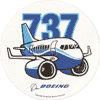
Sign in to follow this
Followers
0

737-800 Avoiding a tailstrike
By
basa, in PMDG 737 NG (Legacy Version)


By
basa, in PMDG 737 NG (Legacy Version)